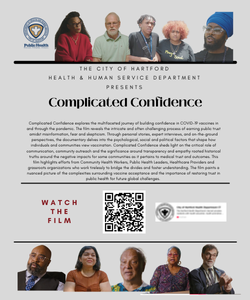By Erin Aubry Kaplan
In 2018, in the first midterm elections after Donald Trump won the presidency, the United States experienced a surge in women running for and winning elected office. It wasn’t a fluke. The phenomenon continued with the 2020 and 2022 election cycles, and today the number of women in Congress is at an all-time high—29% of the House, 25% of the Senate. This includes record numbers of women of color. Much of this increase has been on the Democratic Party side, a concerted response to the misogynistic bent of Trump and Trumpism evident before he was elected in 2016. But the message in the surge was clear: Women who were determined to make their voices heard and make change did just that. The year 2018 looked like a breakthrough.
Despite the record increase of women in Congress and elsewhere, including mayorships and governorships, the nation is far from achieving gender parity. In 2024, on the eve of what’s being called the most consequential election of the past eight years, the spikes that began six years ago have plateaued. While the surge of women running qualifies as an important trend, the trend is far from the norm. The problem, say experts like Nancy L. Cohen and Kelly Dittmar, is that the obstacles to women candidates that have always existed—money, lack of institutional support, and a male-dominated culture—are still in place, and are more daunting for women of color and other marginalized constituencies than for whites. This, despite the fact that women have outvoted men in national elections for the past 40 years.
“Racism and sexism have converged to ensure there are few women in office, even fewer women of color,” says Cohen, founder and president of the Gender Equity Policy Institute. “There are more resources for women now. There is momentum to have a more diverse elected class that looks more like America. But our system has so many barriers to that happening.” And those barriers aren’t new. One is economic: A recent study from the Center for American Women and Politics (CAWP) at Rutgers University notes that salaries for elected office in many states are frequently too low to meet working women’s needs, which often include childcare. It’s another way women are underpaid, a long-standing problem that’s part of a larger context of structural problems, through which Cohen says we should always view the state of women in electoral politics. As she says, “History matters.”
Still, the recent rise in the number of women in elected office is significant. The CAWP reports that after the 2022 election, the number of women serving in Congress rose to a new high of 149, or nearly 30% of all seats—that’s 106 Democrats, 42 Republicans, and one Independent. With 91 Democrats and 33 Republican women serving in the House of Representatives, women marked a new House record. The 25 women serving in the U.S. Senate—15 Democrats and nine Republicans—fell one short of the record. Four more women serve as nonvoting delegates (i.e., those who represent the District of Columbia and U.S. territories) to the U.S. House. What’s more, the 118th Congress swore in one of the most ethnically diverse groups of women officeholders in the U.S. House to date, boasting new highs in representation for Black and Latina women.
At the same time, 21 women departed the House in 2022 due to retirement, running for another office, or primary or general election defeat—the highest number in U.S. history. Attrition is normal, but for women, who are still trying as a demographic to get a foothold in electoral politics, the 2022 departures could be a red flag.
Dittmar, associate professor of political science at Rutgers and CAWP’s director of research, says that attrition could be due to burnout. “For a while there was a greater sense of urgency” for women to run for office, she says. “But have we moved from urgency to exhaustion?” Dittmar says that in 2024, unlike other years, there’s no catalyzing event to make women want to throw their hats into the ring—such as the racial reckoning sparked by the police murder of George Floyd, the revelations of the #MeToo movement, the COVID-19 pandemic, or the Supreme Court overturning Roe v. Wade. While all these events continue to impact politics—the loss of abortion rights in particular will be a huge factor for Democratic voters in the 2024 election—the shock of invigorating events that compelled women to run for office has faded.
But that doesn’t mean they aren’t engaged. Dittmar’s 2023 CAWP study, “Rethinking Women’s Political Power: Exploring State Political Systems,” takes a closer look across five states at the ways in which women build power, including but not limited to winning elected office. “Motivation to run can be different for women,” she says. “It’s not always a career move. There are different calculations.”
Dittmar says that women effect political change in ways that are not reflected in the numbers elected to office. For example, women of color work to shore up voting rights and are part of a rich history of local activism. The “Rethinking” research shows that they exert as much influence on elected officials’ decision-making as high-level staffers do—influence that’s low-profile by nature but ultimately helps shape policy.
The study also found there are existing support infrastructures for women in politics, such as networking and advocacy groups, that are helpful but insufficient. (“Support infrastructure” is broadly defined and includes aid in education, preparation, recruitment, mentorship, camaraderie, coping, and achieving professional success for women seeking and/or holding political power.) Where support infrastructures do exist, they do not equally serve all women. Such infrastructures are overly reliant on volunteers, short on support for current officeholders and related positions like consultants and lobbyists, and rarely designed to serve women at intersections of race and gender. In many cases, Dittmar says, women’s political organizations are led and/or resourced by white women.
While these impediments are sobering, they don’t seem to discourage women from seeking office. She Should Run, a nonprofit group promoting women as candidates, found in a 2023 “Group Chat Issues” survey conducted with YWCA and UN Women that 22% of women surveyed were fired up to run for office.
Being encouraged to run by friends, family, colleagues, and mentors is a big factor, especially with Black women, who have to be repeatedly encouraged to run before they actually do, and who have a history of working for change in their communities. Asian women were least likely to run for office, while Native American women were most likely to view politics in a positive light and to see themselves as leaders.
The report’s key finding is that the majority of women surveyed were motivated to address problems closest to them, which go beyond gender equity. In other words, women were most likely to take action on issues related to children, health, education, and poverty, but their broader concerns include the economy, climate change, reproductive health, racism, and gun violence. This is especially true of women who are Gen X and younger.
Dittmar says it is also important to examine what elected women are doing to address the growing number of issues they care about. Access is important, but it’s only a means to an end. “Power is not just about getting there, it’s about being in the room,” she says. “Does a Black woman in the room have the power to disrupt the room, to change the conversation, change the policy debates? That’s the question.”
The “Rethinking” report found via interviews of political figures in Georgia, Nevada, Illinois, Oklahoma, and Pennsylvania that women officials still struggle to establish that kind of power. Compounding this struggle is the fact that women remain underrepresented in influential non-elected positions such as donors, staff, political appointees, consultants, campaign strategists, and managers. This amounts to underrepresentation in elected offices at all levels.
Women are governors of 12 states, still a distinct minority, but also a record high number. Dittmar says gubernatorial races can actually be tougher to access and win than federal races. “The question that faces women is, are you capable of being a sole executive?” she says. Governorships are also highly competitive, i.e., more sought-after by men. According to recent CAWP data, women are not much better represented at the municipal level—despite popular belief to the contrary—including on school boards, which are often seen as attracting grassroots candidates and aligning with issues traditionally associated with women, such as education and kids.
But even if the numbers were better, it would not necessarily be good for women. For example, the Republican Party, long seen by many as unfriendly to women’s rights and feminism, includes many prominent conservative women such as Reps. Marjorie Taylor Greene, Elise Stefanik, and Lauren Boebert (dubbed in a recent article by The Washington Post as the “MAGA mean girl”).
Boosting their political agenda are right-wing women-led groups like Moms for Liberty leading the fight against LGBTQ rights, Black history education, and other favored targets of Trump’s MAGA movement. Underpinning these groups is an overwhelmingly white Christian evangelical movement.
In fact, Trump won the majority of white female votes in 2016 and 2020, according to exit polls. “We know why white women supported Donald Trump—because they’ve been aligning with white male power forever,” says Dittmar. “They benefit from white supremacy.”
The fact that the GOP’s agenda is increasingly antithetical to women’s rights complicates efforts to increase the party’s female representation. In a 2019 New York Times piece, Cohen wrote that because of this agenda, female Republican elected officials were becoming an endangered species and women were leaving the party in droves. It was up to a handful of moderates like Sen. Lisa Murkowski of Alaska to pull the GOP back from the brink by serving as models for other Republican women. That didn’t happen, even though Trump lost the election in 2020, and Murkowski, one of the few GOP senators who voted to convict Trump in the second impeachment for his role in inciting an insurrection, is still in office.
On the Democratic side, Cohen says the liberal party is responding to voter pressure to counteract Trumpism but is not dealing with underlying biases within the party.
Women’s political participation is also hampered by the threat of violence, mostly from the extreme right, whose views are fueled by religious fervor. For women in office or those thinking of running, “the cost of service is too high,” Cohen says. She adds that it’s no accident that “this is all spiraling after [the] Obama years,” when the GOP’s overt antipathy toward a Black president opened the door to antipathy toward other groups. “Gender hostility and racial hostility go hand in hand.”
So what can be done to increase access and sustain interest? Many solutions were put forth in a 2021 report by the Center for American Progress assessing women’s status in politics and leadership. Despite the alarmingly antidemocratic nature of the Jan. 6 insurrection, the election itself was seen as a hopeful moment, with Kamala Harris becoming the first female, first Black, and first Indian American woman to become vice president. Record numbers of women of color and LGBTQ candidates ran for offices across the country in 2020—and won.
Still, the report acknowledged progress was slow and recommended recruiting more women of color and candidates outside of existing networks; increasing funding for women candidates, especially in open-seat elections that offer the best opportunities for women of color, LGBTQ candidates, and marginalized women; combating the influence of big donors by getting cities and states to adopt small-donor public financing of elections; increasing legislative pay; and requiring legislatures to adopt family-friendly workplace policies.
Perhaps the most obvious, but most important, recommendation is the report’s last one: fostering an atmosphere of equity and respect on the campaign trail by rooting out sexual harassment, racism, homophobia, and other abuses. Changing the culture is the surest and best way to open access and ensure equitable outcomes not just for women, but for everyone.
This article was originally published in YES Magazine!





